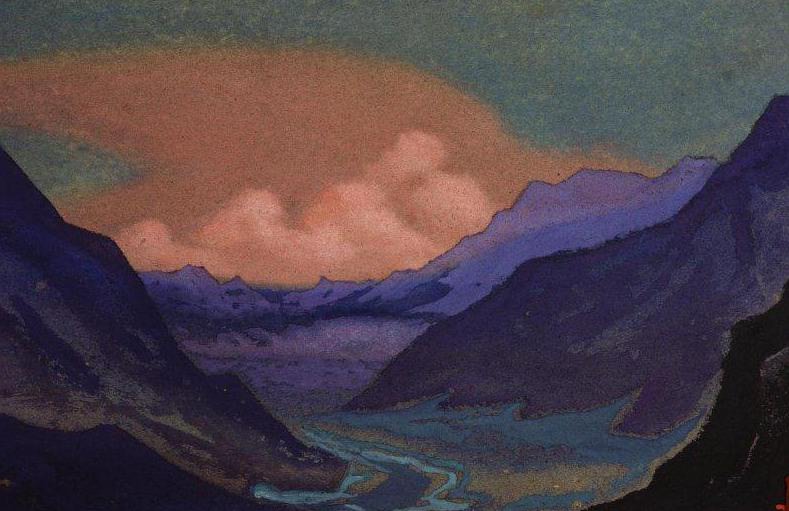Himalayas Roerich N.K. (Part 6)
Roerich N.K. – Himalayas | 171
1944. Tempera on cardboard. 30.5 x 45.7 cm.
Edit attribution
Download full size: 789×511 px (0,1 Mb)
Back to album: Roerich N.K. (Part 6)
Location: The State Museum of Oriental Art, Moscow (Государственный музей искусства народов Востока).
Кому понравилось
Пожалуйста, подождите
На эту операцию может потребоваться несколько секунд.
Информация появится в новом окне,
если открытие новых окон не запрещено в настройках вашего браузера.
You need to login
Для работы с коллекциями – пожалуйста, войдите в аккаунт (open in new window).




















You cannot comment Why?
A body of water, likely a river or lake, winds its way through the valley floor, reflecting the muted colors of the sky above. The surface appears still, contributing to the tranquility of the scene. Above this, the sky is divided into horizontal bands of color: a pinkish-orange hue dominates the upper portion, transitioning downwards into cooler tones of blue and green. This layering creates an atmospheric perspective, suggesting distance and vastness.
The palette employed is restrained, relying on cool blues, purples, and greens contrasted with warmer pinks and oranges. The limited range of colors reinforces a sense of quiet contemplation rather than vibrant energy. Theres a deliberate lack of detail throughout the work; textures are suggested but not explicitly defined. This contributes to an impression of generalized landscape rather than a specific location.
The dark border surrounding the image further isolates the scene, emphasizing its remoteness and creating a feeling of enclosure. It draws attention solely to the depicted vista, preventing any distraction from the central subject matter.
Subtextually, the painting evokes themes of solitude, grandeur, and the sublime. The imposing mountains suggest an encounter with forces beyond human comprehension, while the muted colors and tranquil water contribute to a sense of peace and introspection. It’s possible to interpret this as a meditation on natures power and beauty, or perhaps a symbolic representation of spiritual ascent – the journey towards something vast and unknowable.